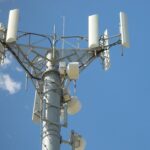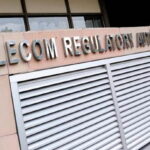The Telecom Regulatory Authority of India (TRAI) on Wednesday issued a supplementary consultation paper on ‘Roadmap to Promote Broadband Connectivity and Enhanced Broadband Speed’. The telecom watchdog on 12th March 2021 received a reference from DoT seeking consolidated and updated recommendations in regard to the proliferation of Fixed-Line Broadband services in the country.
DoT has raised new issues like exemption of the license fee on the revenues earned from fixed line broadband, misuse of the licenses through misappropriation of revenues due to the proposed exemption of the License Fee on the revenues earned from fixed line broadband services, and promoting proliferation of fixed-line broadband services by providing direct benefit to consumers for usage of fixed-line broadband services.
TRAI has released the supplementary CP on the above issues to provide its consolidated and updated recommendations for the proliferation of fixed-line broadband services since the issues were not explicitly consulted with the stakeholders in the earlier CPs.
Further, the CP released last year didn’t have any explicit reference to the use of Street Furniture for rollout of 5G networks. The supplementary CP has around 12 odd questions for the stakeholders to comment upon.
ISSUES FOR CONSULTATION
- What should be the approach for incentivizing the proliferation of fixed-line broadband networks? Should it be indirect incentives in the form of exemption of license fee on revenues earned from fixed-line broadband services, or direct incentives based on an indisputable metric?
- If indirect incentives in the form of exemption of license fee on revenues earned from fixed-line broadband services are to be considered then should this license fee exemption be limited to broadband revenue alone or it should be on complete revenue earned from services delivered through fixed-line networks?
- In the case of converged wireless and fixed-line products or converged services delivered using the fixed-line networks, how to unambiguously arrive at the revenue on which license fee exemption could be claimed by the licensees?
- What should be the period for license fee exemption? Whether this exemption may be gradually reduced or tapered off with each passing year?
- Is there a likelihood of misuse by the licensees through misappropriation of revenues due to the proposed exemption of the License Fee on the revenues earned from fixed-line broadband services? If yes, then how to prevent such misuse? From the revenue assurance perspective, what could be the other areas of concern?
- How the system to ascertain revenue from fixed-line broadband services needs to be designed to ensure proper verification of operator’s revenue from this stream and secure an effective check on the assessment, collection, and proper allocation and accounting of revenue. Further, what measures are required to be put in place to ensure that revenue earned from the other services is not mixed up with revenues earned from fixed-line broadband services to claim a higher amount of incentive/exemption?
- Is there any indisputable metric possible to provide a direct incentive for the proliferation of fixed-line broadband networks? What would be that indisputable metric? How to ensure that such direct incentives will not be misused by the licensees?
- What are the key issues and challenges in getting access to public places and street furniture for the installation of small cells? Kindly provide the State/ City wise details.
- How to permit the use of public places and street furniture for the effective rollout of 5G networks? Kindly suggest a uniform, simple, and efficient process which can be used by States/ Local-Bodies for granting access to public places and street furniture for installing mall cells. Kindly justify your comments.
- Which all type of channels of communication should be standardized to establish uniform, transparent, and customer-friendly for publicizing provisioning of service and registration of demand by Licensees?
- Whether proliferation of fixed-line broadband services can be better promoted by providing Direct Benefit Transfer (DBT) to subscribers of fixed-line broadband services? If no, elucidate the reasons.
- If the answer to Q11 is affirmative, then:
i. Should DBT scheme be made applicable to all or a particular segment of fixed-line broadband subscribers? Kindly justify your comments.
ii. If you recommend supporting a particular segment of fixed-line broadband subscribers, how to identify such segment of the subscribers?
iii. How to administer this scheme?
iv. What should be the amount of DBT for each connection?
v. What should be the period of offer within which individuals need to register their demand with the service providers?
vi. What should be the maximum duration of subsidy for each eligible fixed-line broadband connection?








No replies yet
Loading new replies...
Join the full discussion at the OnlyTech Forums →